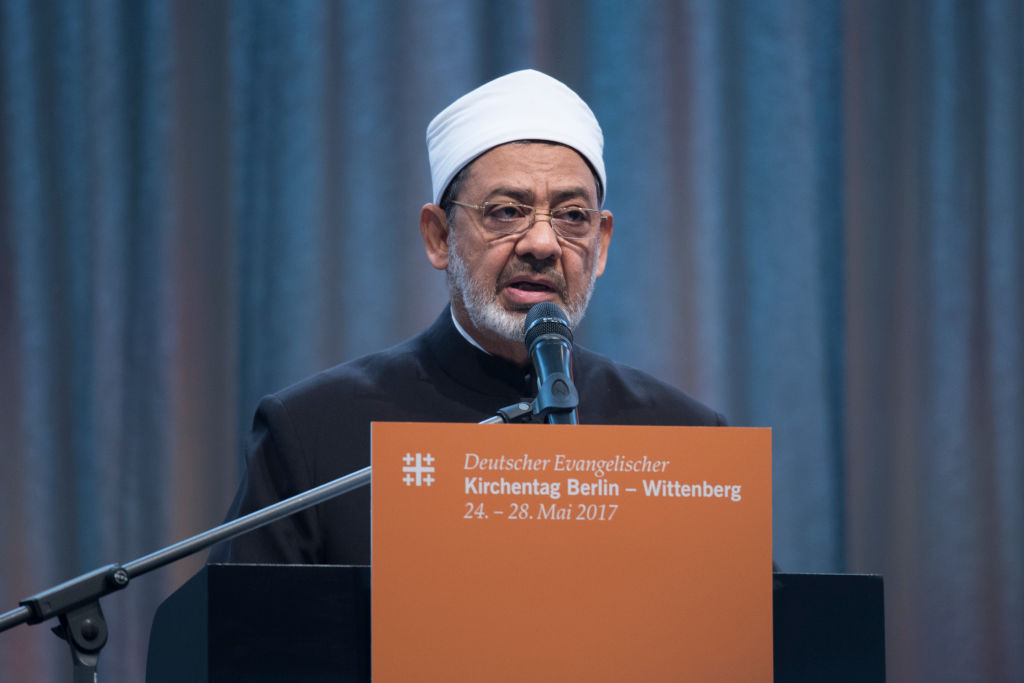|
In this mailing:
- Bassam Tawil: Newsflash:
Jerusalem Not on Fire!
- Denis MacEoin: Why Did Islamic
State Kill So Many Sufis in Sinai?
- Amir Taheri: The Mullahs
Overplay the Military Card
by Bassam Tawil • December 10,
2017 at 5:00 am
- "More
journalists than protesters..." — Björn Stritzel, German
journalist.
- Protests against
Israel and the US are not uncommon on the streets of Ramallah,
Hebron and Bethlehem. But for the "war
correspondents," there is nothing more exciting than
standing behind burning tires and stone throwers and reporting
from the heart of the "clashes." Such scenes make
the journalists look as if they are in the middle of a
battlefield and are risking their lives to bring the story
home to their viewers. They might even receive an award for
their "courageous" reporting from danger zones!
- Jerusalem is tense,
and has long been so, because the Palestinians have not yet
managed to come to terms with Israel's right to exist. That is
the real story. The Palestinians rage and rage for only one
reason: because Israel exists. Put that in a story and publish
it.
A
Palestinian man uses a slingshot to hurl stones at Israeli border
police near Ramallah, on December 9, 2017. (Photo by Chris
McGrath/Getty Images)
The Palestinians declared a three-day-long "rage"
spree over US President Donald Trump's announcement recognizing
Jerusalem as Israel's capital. Thus far, however, it seems that the
real anger is showing up in the international media, not on the
Palestinian street.
Question: How many foreign journalists does it take
to cover the Palestinian reaction to Trump's announcement? Answer:
As many as the Israel-Palestinian-conflict-obsessed-West can manage
to send.
The massive presence of the international media in
Jerusalem and the West Bank has taken even the Palestinians by
surprise. Since Trump's announcement on December 6, dozens of
additional journalists and camera crews have converged on Israel to
cover "the big story."
The American Colony Hotel in Jerusalem, once a
favorite haunt of international reporters, is once again packed
with journalists from around the world.
by Denis MacEoin • December 10,
2017 at 4:30 am
- A 2007 report by the
Rand Corporation advised Western governments to
"harness" Sufism, saying its adherents were
"natural allies of the West."
- In the end, the Sufi
parties are outnumbered by those of their Salafi opponents,
meaning that the brotherhoods and the wider Sufi-oriented
public must look to the state for protection. In that context,
it is important to stress that the massacre in Sinai was not
simply another Islamic State attack on people it considered
heretics (effectively, in their interpretation of Shari'a law,
non-believers), but an assault on everyday mainstream Islam in
Egypt, a declaration of apostasy for the vast majority of
Egyptian Muslims.

The head
of Cairo's al-Azhar University, regarded as the most important Sunni
institution of religious authority and Islamic law in the world, is
always a Sufi shaykh. To most Egyptians, Sufism is a part of
everyday life. Pictured: Shaykh Ahmad Al-Tayeb, the current Grand
Imam of al-Azhar and former president of al-Azhar University.
(Photo by Steffi Loos/Getty Images)
The massive November 24 terrorist attack by Islamic
State on a Sufi mosque in a town of little importance, Bir al-Abd,
in northern Sinai, resounded across the world. Despite the presence
of members of the security services, the al-Rawda mosque also
serves as the local headquarters of a prominent Sufi Brotherhood
founded by the local al-Jarir clan, a branch of the powerful
Al-Sawarkah tribe. The number of dead, somewhat over 300, were
shockingly high, yet not higher than the tolls in two earlier
Islamic State massacres. In 2014, IS fighters killed 700 men of the
Shu'aytat tribe in Dayr al-Zur. "Over a three-day period,
vengeful fighters shelled, beheaded, crucified and shot hundreds of
members of the Shaitat tribe after they dared to rise up against
the extremists." In 2016, a series of bombings in Karrada, a
Shi'i district of Baghdad, took some 347 lives.
by Amir Taheri • December 10,
2017 at 4:00 am
Iranian
"Supreme Guide" Ayatollah Ali Khamenei meets with Iranian
President Hassan Rouhani on June 22, 2016. (Image source:
Khamenei.ir)
Faced with mounting domestic problems and diplomatic
isolation to prolong its hold on power the leadership in Tehran is
increasingly depending on the military establishment. Highlighting
this growing dependence is the "Supreme Guide" Ayatollah
Ali Khamenei who has held conclaves with the military chiefs on
three occasions in less than a month during which signs of the
military's ascendancy within the regime's power structures have multiplied.
One sign was Khamenei's decision to ask the newly
appointed Chief of Staff General Muhammad Hussein Baqeri to take
over the key issues of cooperation with Russia and Turkey over
Syria to the exclusion of President Hassan Rouhani and his
administration. Baqeri has also launched an ambitious project for
the creation of a de facto military alliance with Turkey, Iraq and
Pakistan, with Russia as an outsider-supporter, in direct
contradiction to Rouhani's repeatedly asserted hope of
accommodation with Western powers.
|































No comments:
Post a Comment